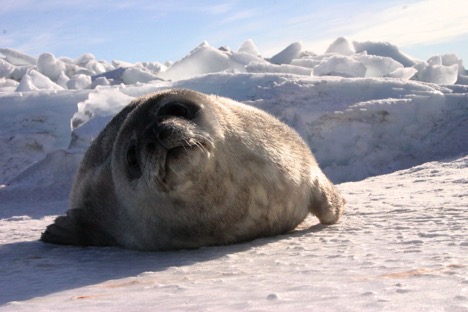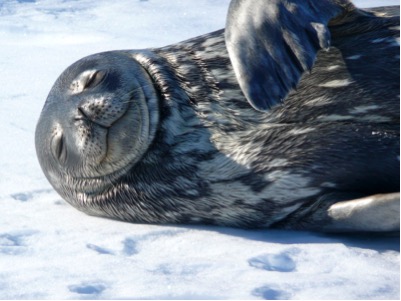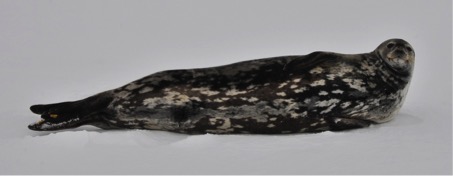Weddell seals: Antarctica’s extreme mammal
Weddell seals are one of Antarctica’s icons. Besides being undeniably charismatic, they are the southern-most mammal in the world, can live up to 30 years, and they are perfectly adapted to living in some of the harshest conditions on the planet. Research on Weddell seals has been on-going since the late 1960s – research that has shown us how they deal with extreme environmental changes and how important it is to be a good mom. These animals give us a glimpse into what it’s like to be a species at the extreme.

But Weddell seals are important for another reason: they are what we call an “indicator species” because they prey on Antarctic toothfish. Never heard of Antarctic toothfish? We bet you’ve heard of another moniker, Chilean seabass, which a high-end delicacy in many upscale restaurants around the world – and it’s also a critical part of the ecosystem in the Ross Sea. The problem with fishing for a species like Antarctic toothfish is that we know so little about some pretty basic life history information: exactly how long it lives, what age it first reproduces, or even where the fish spawn. Knowing how many fish to take while maintaining balance in the ecosystem is pretty tough to do. But despite having little information about Antarctic toothfish, we can gain insight into the health of the Ross Sea by understanding how Weddell seal populations are doing! By counting seals in satellite imagery, we hope to learn how the Ross Sea is functioning – or not – in the face of this fishery.

Join us on an Antarctic adventure!
So, why count seals on Maxar’s satellite imagery? The answer is pretty easy: because we couldn’t do this without you! Even though our team has people who are Weddell seal experts and know how to count seals on the images, it would take years – literally – if we wanted to count them all. By surveying the sea ice with us, you will be assisting not only the pursuit of science, but you will help us better protect and conserve the most pristine piece of ocean left: the Ross Sea. Join us, won’t you?

© Kim Goetz
Here’s a few pointers to help you on your search:
- Weddell seals will show up on the images as black dots on the ice, like this picture (Figure 1):

- Seals are associated with cracks in the ice – it’s how they get in and out of the ocean. Do you see the crack in the ice on the image above (Figure 1)? That kind of crack is what you want to look for when you’re looking for seals, and you might also find seals near pressure ridges and tide cracks like in this image below (Figure 2).

- If you see an image like this one below (Figure 3), it is very unlikely you will see any seals. Just keep looking around!

- Don’t be fooled by rocks or dirty ice (Figure 4). Rocks sometimes fall onto the ice near land – so don’t forget to zoom out every once in a while to see where you are!

- Have fun counting Weddell seals in imagery, knowing that you’re helping to do science and conservation in the last true wilderness on Earth: Antarctica. Thank you for your help!


Michelle LaRue is a wildlife ecologist at the University of Minnesota, interested in understanding broad-scale populations of marine and terrestrial predators, particularly in polar regions. She uses high-resolution satellite imagery to understand biogeography, population status, and drivers of population change in emperor penguins, Adelie penguins, Weddell seals, polar bears, and walrus.